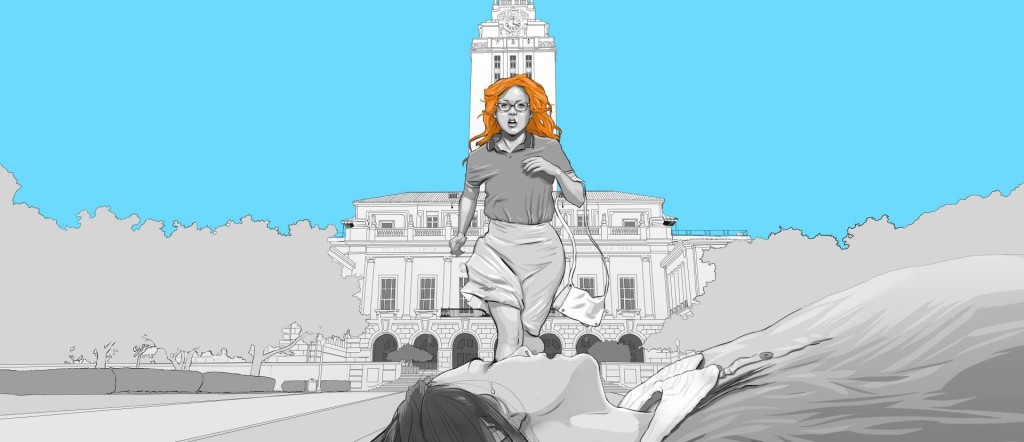 Public television presents a rather grim Valentine’s Day by documenting two notorious U.S. shootouts.
Public television presents a rather grim Valentine’s Day by documenting two notorious U.S. shootouts.
The better of them can be found in Keith Maitland’s sensitive “Tower” making its TV debut on “Independent Lens” (PBS, 10 p.m., check local listings). It rises above the usual way to handle one of the first cases of mass shooting in America, when a man climbed to the clock tower at the University of Texas in 1966 and opened fire, killing 16 and injuring 33 others.
Most notably, it recalls the horrific event through animation matched with re-enacted recollections, which works better than anyone could have imagined, more as a series of moving illustrations. It gains impact when it begins to show many of the eyewitnesses and victims in some case, who in some cases are reuniting 50 years after that hot afternoon to recollect the story.
The other difference is that it only tells the tale from the plaza, where the victims scrambled and fell. I asked the filmmaker about leaving out in many ways even the name of Charles Whitman from the film until the very end at the TV Critics Association press tour last month.
“We took we made a very conscious decision to focus and tell the story from the ground up and not from the top down,” Maitland says. “But it wasn’t a decision we came to lightly.
“About a year into what was a four year process, I had already gotten to meet these folks. I’d already started putting their stories together, and it just occurred to me there was no way to honor their stories and their very specific individual experiences and then pivot to his story and still say that we were doing what we wanted to do, which was to honor them.”
Maitland says he did a lot of research of Whitman. “I can tell you all about his childhood, his relationship, the things he left behind, what he wrote, what his autopsy said, and what people have said about him in the last 50 years.”
“You can easily spend an hour and a half just talking about him,” he said. “But I felt like other people had tried to do that over the years.”
Everybody who knows about the case knows his name, he said, but “nobody knows theirs.
“So when we made the decision to not include the sniper, it was like a weight had kind of dropped off of our shoulders, and it let us be really clear and really focused on what we were there to do.
“The goal of ‘Tower’ is not to be a Wikipedia entry that gives you every piece of information about that day. The goal is to put you in the shoes of eight people who lived through that day and then explore what it’s like to live with that for 50 years. So someone else can tell the story of Charles Whitman. We told these stories.”
As far as the animation, its use made the film a lot more accurate, says John “Artly” Fox, who emerges as one of the heroes that day. “You had the feeling of being there, and it was like what it was being there that day. It was in the small details. All of the existing footage were from a very long ways off. The cameraman would be back here, hiding, like shooting somebody from a long distance, and with Keith’s animation technique, it puts you right in our shoes at the immediacy at the moment.”